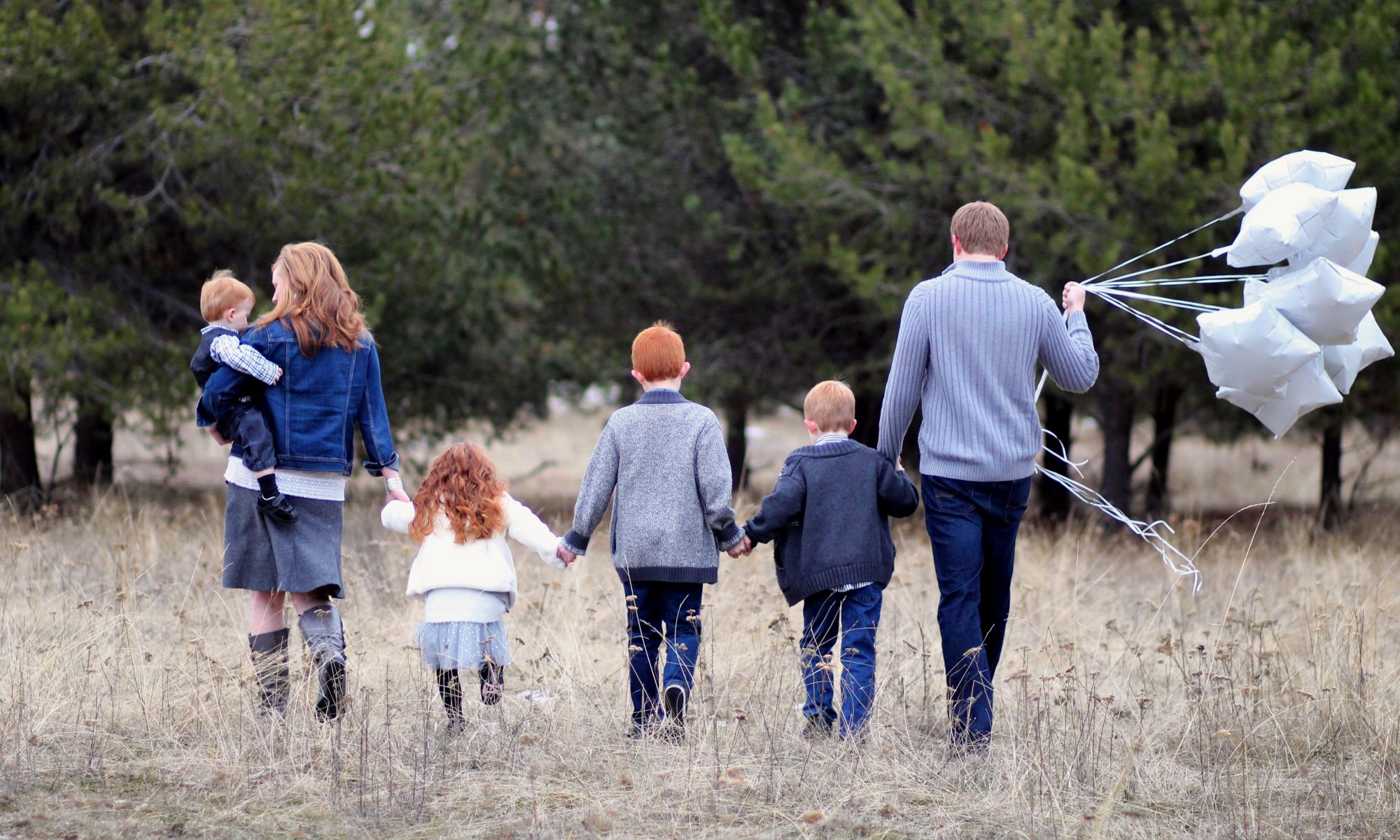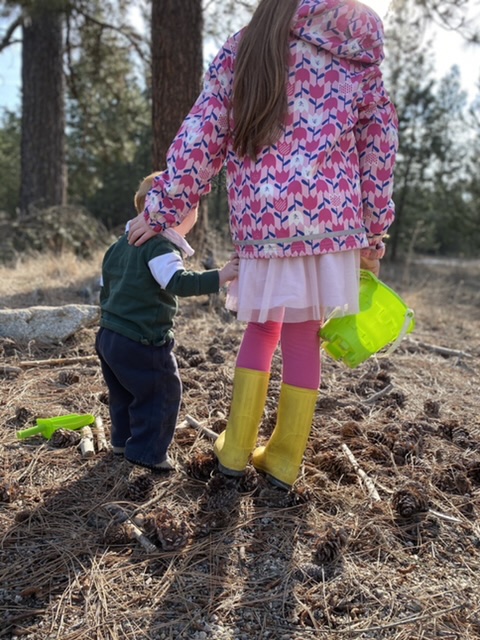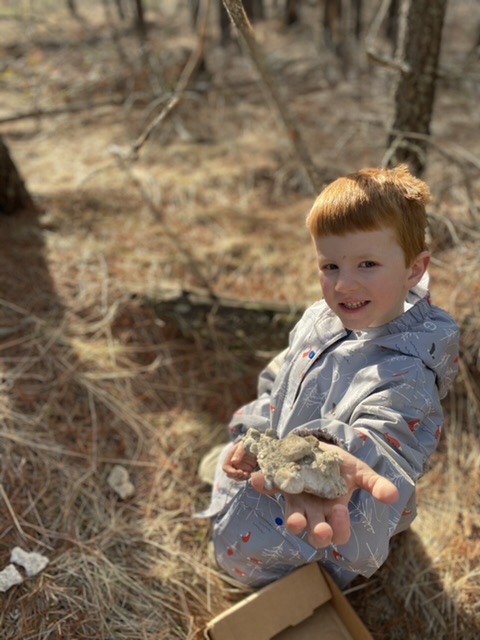Part 3.
If you wonder about other tips and tricks and experiments and experiences… what kind of things others have learned from their own series of trial & error… never be afraid to ask for someone to share their wisdom with you. Learn by watching others, learn by asking others, learn by trying and iterating on your own. In fact, I am further along in parenting in the pew than the woman who wrote this post, but I just found this and think it’s so encouraging to see someone else saying the same things I have found to be true. She reminded me of some tips I had forgotten, and worded some things in ways that were a particular blessing. So read what Lisa wrote here – if only to know that I’m not the only one saying these things about little saints and training worshipers from their earliest days. And I am just beginning to read Let the Children Worship, which looks very promising. Maybe I’ll come back and give an official review once I have read the whole thing; it’s rather short and unintimidating. A friend of mine share an article by that same author that was posted here in blog-format, and it’s super encouraging! If having a little one with you in worship is new or feels overwhelming, start by reading that article and be encouraged.
For the most part, I have written lately about training “a child,” but have not addressed the reality of balancing an infant against my chest, a toddler on my right, and a preschooler on my left. I have mentioned that the phase of life I’m in currently involves three kids who are completely self-capable worshipers – ages 14, 10, and 9. The almost-3 year old stays with me… unless I’m serving as accompanist, which means someone else has to keep him, and that honestly never goes super smoothly yet. And the 6 year old needs to sit beside an adult, but it doesn’t matter whether it is mama or daddy or a grandparent or even a friend. He just needs the gentle accountability of having an adult beside him for occasional reminders. He’s this close to graduating even from that being a true necessity. But all that to say: I have been in the situation before where all my little people were quite little people, and it felt like a juggling game in the pew every week. To be forthright: I haven’t taken notes during a sermon for years. I don’t even hold a Bible on my lap anymore at this point. But I teach my children to take notes, and I help them hold their Bibles open. And that is way more valuable, because this season is so comparatively short but has tremendous dividends in the long run. In another two years, I think I will absolutely be balancing a Bible and notebook on my lap again – because my children will no longer need so much supervision and oversight from me. It is a process of slow progress, but the progress really does happen right in front of my eyes. It is beautiful to behold. I’m here for it. And I take notes at home when I read or listen to things, so I am still practicing that process. The season where my children are learning to worship is so short, and I feel the weightiness of the responsibility to lead them in it. So that is where my priority is at this point: training them for Sunday morning worship is more important than me being able to take my own notes or listen uninterrupted. As I look down the pew at my 6, 9, 10, and 14 year olds taking notes and listening and learning as my brothers and sister in Christ – that’s the fruit that reminds me every week why this sowing faithfully is important, why it is a blessing even when it just feels hard.
Having the bigger picture in mind, remembering that they are shoulder to shoulder with me in Christ’s Kingdom, and looking forward in hope and faith to the day when we will all be adults… it helps even on the frenzied Sunday morning when I just wonder if I will even get through a two hour service without losing my cool. (Praise the Lord, there is grace. Abundant grace! Grace bigger than all my sins. His mercy is more!)
Let me say, do not underestimate the value of standing in the back to bounce your baby or toddler during the service. For the first 18 months, my babies have relished spending the service in a wrap or baby carrier. Often they are fine with me just sitting in the pew while they are snuggled and strapped against my chest. But they also might need me to stand and bounce or sway. And that’s completely fine. I like sitting in a place where I can either stand right beside where my family is sitting or right behind them. I always want to stay as close in proximity to my family as I can. And there are often ways to make that work, even if I am needing to be standing during a sermon in order to best care for my youngest-at-the-time.
If I have a choice, I will always sit in a pew rather than a chair. It is so hard to keep a kid in their own chair, rather than squeezing and snuggling together on a bench. Plus, chairs tend to have a space where the seat and back “meet” but leave a gap where things tumble to the ground – pencils or puffs or papers… or chubby little legs. Try to sit in a place where you can minimize those types of struggles in the middle of a service. Plan not only what to bring (and what NOT to bring), but where to sit. Is there a speaker nearby that will blast the ears of your sensitive kid? Don’t sit there. Is there a fan or heater vent somewhere that will distract your kid? Sit somewhere else. Can your kid reach the lightswitch for the sanctuary if you sit in a certain spot? Please find a different spot.
If your youngest child is more than four years old, sit as close to the front as possible. This is good for them – it narrows their scope of vision so there are less distractions. It is good for others – it leaves seats toward the back for families with younger children and babies so they have a quicker route to exit when it becomes necessary.
If you are old enough to choose where to sit in a worship service, please choose to leave the back rows for families with children & the littlest saints in tow. This is a generosity and kindness that is too often underestimated. And if you only take up half a row, please leave aisle seats for parents with little ones. Again, this is a generosity and kindness: it is a way you can serve and help the parents in this trench of raising up little worshipers. Give them the aisle seat so they can come and go as they train their little ones. You ought not need to get up repeatedly during a service, but a parent who is training their toddler to be quiet and be still, to learn focus and attention and obedience, very well may need to be up and down five or ten times during one service.
There is literally almost never a reason for a larger child or adult to need a bathroom break during a worship service. Teach yourself and your children to use the bathroom before church starts, and then they can hold it until church is over. This might take some training and some practice – and there is always an exception to the rule for someone who has a medical problem with their bladder (even a 35 week baby doing acrobatics in the womb) or a little one who is freshly potty training – but for the majority of church goers there ought not to be bathroom breaks necessary during the worship service. It is just as distracting and disruptive for an 8 year old or a 17 year old or a 42 year old to get up and walk out (and then flush the toilet in the hallway, which everyone in the sanctuary can hear, by the way…) as it is for a baby to fuss or escape their pew or whatever.
And water breaks? Learn to bring a little water bottle for those extreme moments when someone genuinely needs to wet their throat – a parent can determine if the child actually needs it (honestly, during pregnancy I had to almost constantly be chewing peppermint gum and sipping lemon ice water – so I know it’s not just a child’s issue). But going out to the water fountain in the middle of the worship service as a norm is unnecessary, and most churches I’ve been part of have noisy water fountains. (Why is that? No idea… but it’s true.)
More and more often, we as a broader cultural community do not teach focus and attention and diligence to one another or the upcoming generation. We are all about instant gratification, fast paced video games with loud noises and bright lights, and everything needs to be bells & whistles for someone to put up with it or try paying attention to it for more than ten minutes. This is a disservice to our families, our children, our churches, our communities, and our humanity at large.
I’ve seen parents give phones and tablets to little ones during worship services, and this breaks my heart. In a doctor’s office waiting room or on a long road trip, or maybe possible even at something like a wedding or funeral… that kind of thing is fine. But remind yourself again what we are doing on Sunday mornings: we are worshipping the King of the universe, the Creator, the Lord of all. It is a unique situation, and it is a gift to your child to teach them to treat it uniquely even from their earliest days. Don’t stumble your little ones by giving them a distraction that equates worship with a waiting room. Rather choose the good by bringing them with you in this godly endeavor to love God with all their heart, soul, mind, and strength – to learn the liturgy and practices of being worshipers of the King. Bless them with the trajectory of knowing and loving Sunday morning worship.
Speak about worship regularly and positively. Teach yourself and your children to look forward to Sunday mornings with joy, anticipation, preparation, and gladness. Seek to make Sunday mornings smooth and sweet prior to the church service so that your spirit (and theirs) is rightly oriented away from the various stumblings of sins and toward fellowship and song and joyful worship. We used to drive an hour each way to church on Sunday mornings (actually, when I was a teenager, we drove 2.5 hours each way!), so snacks & audiobooks were key. It was honestly hard to maintain sweet fellowship with all family members during that long commute, and arrive for worship with genuine peace and joy. We now drive just five minutes each way to church on Sunday mornings, and we often spend the entire time singing Psalms and hymns. I highly recommend this. There’s nothing like singing together as a family to prepare you to worship together with God’s people in His house. I love Deuteronomy 6:6-7, and singing and reciting and catechising are often great ways to do this… but so is the simple act of prioritizing worship together on Sunday mornings. There is no greater act of Christian parenting than that of discipling our kids for the Kingdom of God. How could we NOT therefore prioritize sharing the pew with them?
I have high-energy, outside-the-box, energetic, fast-paced children. It takes effort to cultivate focus and attention and diligence in them. And I am still learning these things myself – partly because my brain is always on high alert, trying to not only be attentive to the Spirit while I worship but also to be holding my five kids accountable, plus either serving musically or supporting my husband as he serves during the service… I get that what I am describing isn’t always going to be easy… I’ve been at it for fourteen years with five kids so I’m right there with you in the moments of this-is-too-hard. It isn’t easy. But it honestly is simple. (Ease and simplicity are not the same thing.)
Simply plan ahead.
Simply be attentive.
Simply be humble.
Simply come to the feet of the Lord as a child yourself, and let your little children come also to Him – don’t forbid them, for the Kingdom of heaven is also for them. (Acts 2:39 & Matthew 19:14)




